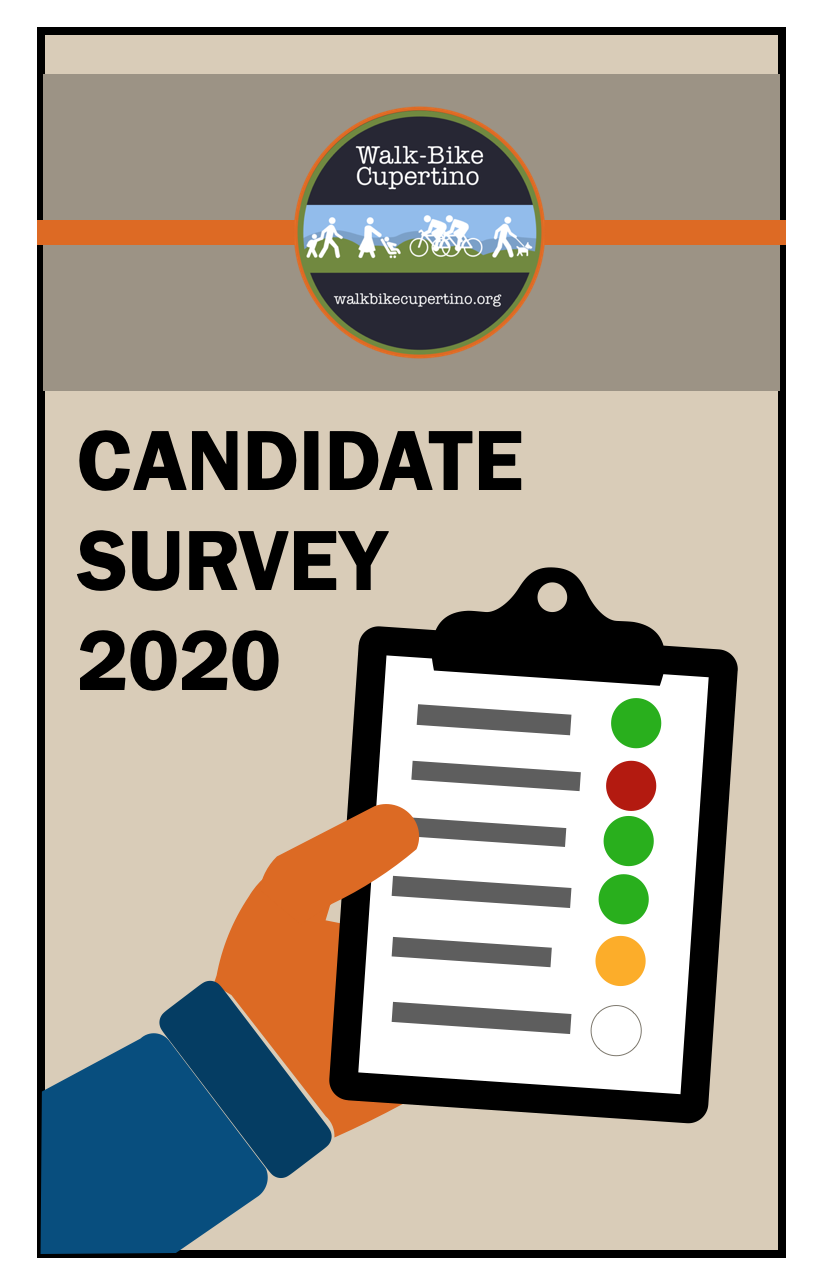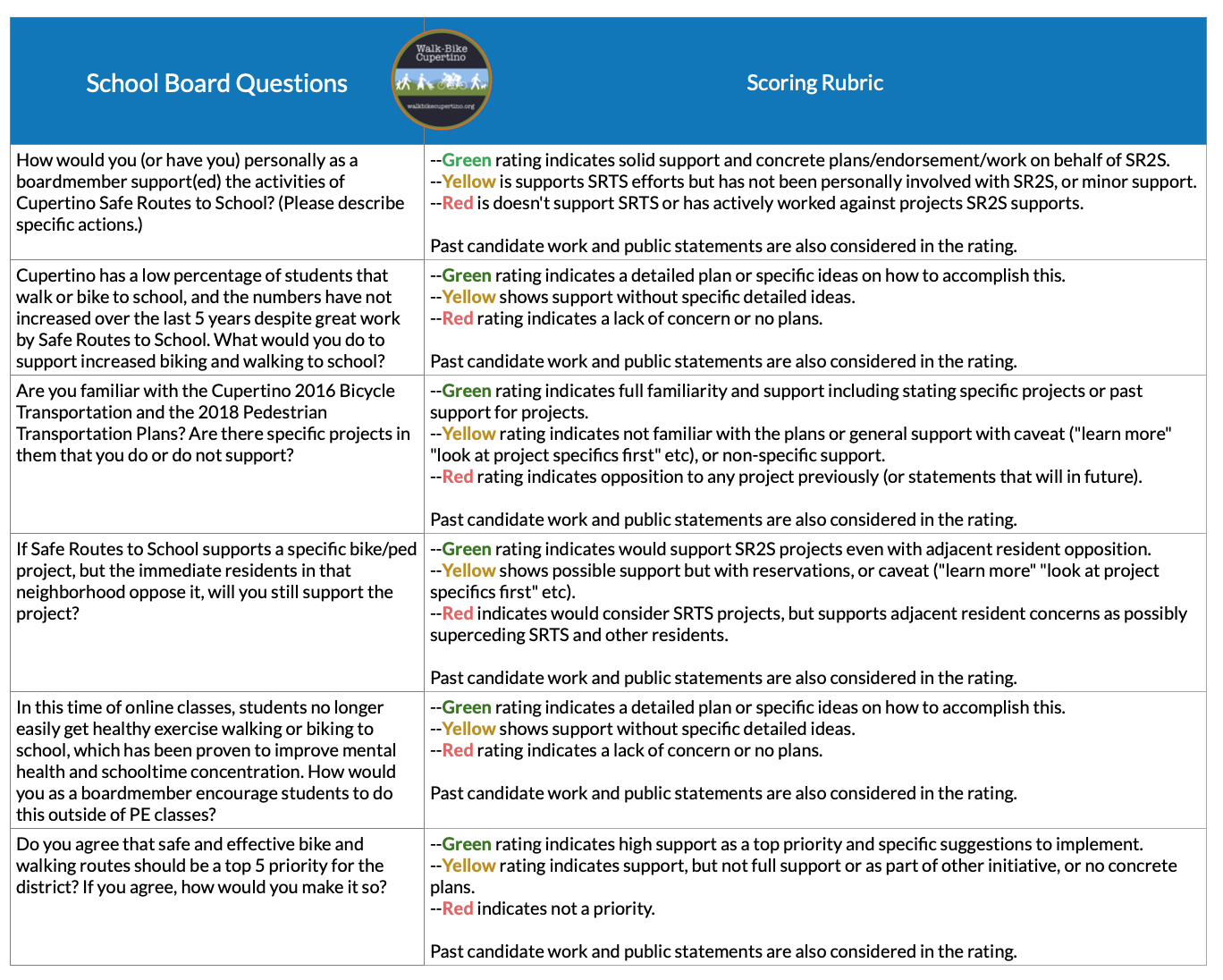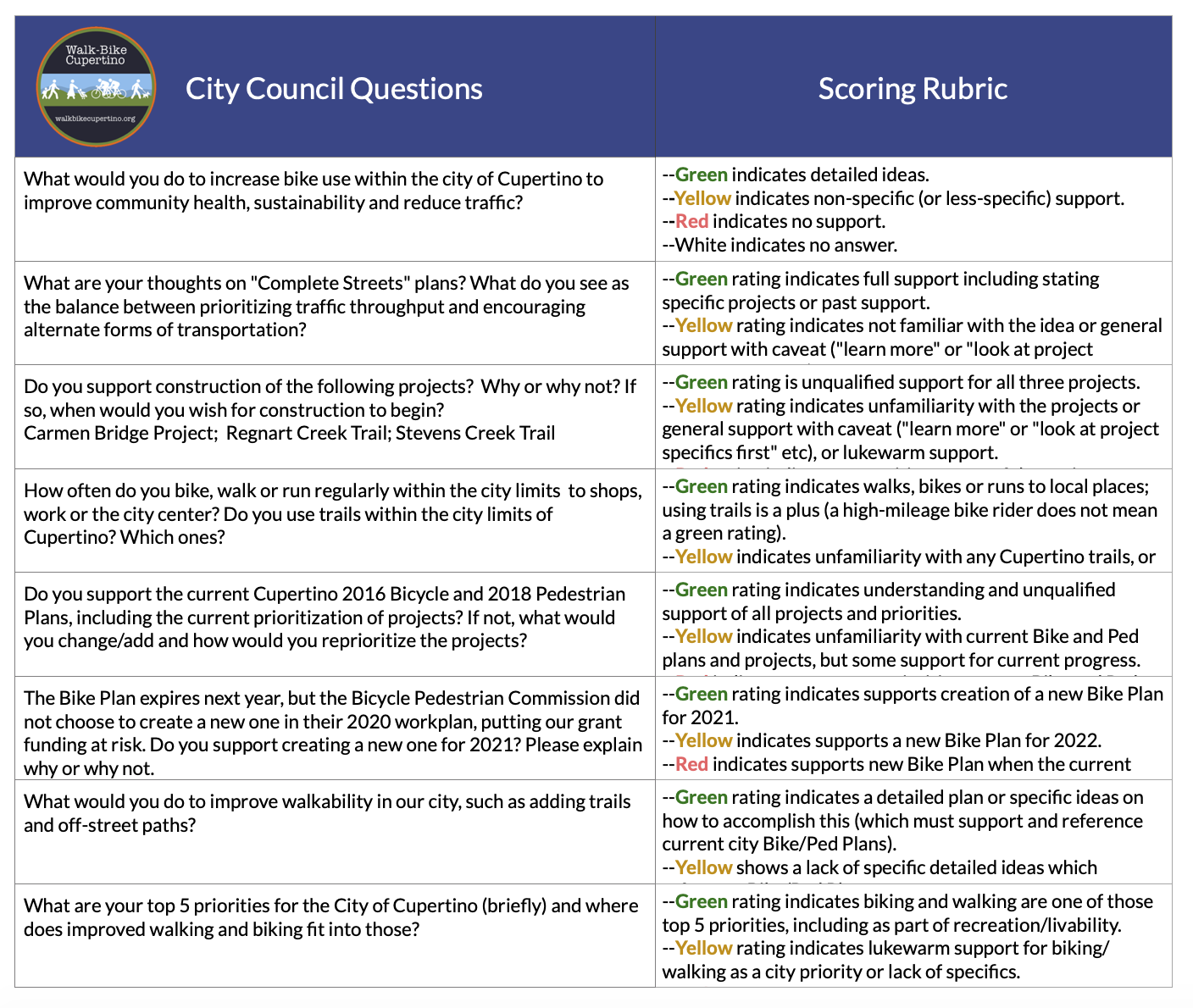Want to know how the questions were developed, who scored the responses and more? Read on for more details and our complete scoring rubric below!
How were the questions developed?
Before the surveys were sent to each candidate, questions were developed based on what Walk-Bike Cupertino members said they were interested in learning about the candidates’ views. The City Councilmember questions were more focused on Cupertino issues, and the School Boardmember questions were more focused on Safe Routes to School and having active kids while schools are doing distance learning.
None of the candidates had any input on the questions or topics we covered and none of the candidates saw the questions before we sent them out to all candidates. The CUSD Board candidate who is also a Walk Bike Cupertino Board member was specifically excluded from all communications on this survey and had no inside access to the questions or the answers.
How did the candidates submit their answers?
Each candidate was emailed a link to their own personal spreadsheet where they could enter their responses. They also had the option to create a pdf document of their responses and email it to us. We then compiled those responses exactly the way they were written by the candidate, without changing their words. None of the candidates have seen the responses or ratings of the other candidates until this newsletter. Candidates could make changes to their responses until September 15, 2020, when the survey period closed.

How can we be sure the candidates are being truthful, and not just saying what we want to hear?
We really can’t. Like much about campaigns, we can only go on what we are told, and hope it is truthful. Most of our local elected leaders do, in fact, follow through on what they say they will do. The benefit of this survey is that we get them to put their promises in writing so we can track that they follow through and let you know when they don’t.
Who created the scores?
The Walk-Bike Cupertino Board reviewed the questions, the scoring rubric, and all the answers to determine the final scorings for each question.
How were the scores determined?
We try to keep the scoring methodology similar year-to-year, so that candidates know what to expect. Green means the candidate states that they are very supportive and provides detailed reasons/plans. Yellow is more lukewarm support, or doesn’t including detailed reasons/plans. We’ve found that without a plan, it’s much less likely that the candidate will follow through. Red indicates a lack of support, not answering the question or answering a different question, or outright opposition. We also consider past actions and public statements by a candidate when determining scores. One example might be if a School Board candidate has personally worked significantly with Safe Routes to School, we would take that into consideration for their scoring for a particular question.Click on the image below to see a larger version of the scoring rubric for the School Board candidates.
Do you have another question about our survey? Contact us at walkbikecupertinofeedback@gmail.com or make a comment on this article. We hope that our survey has been valuable information to help you decide on the best candidates for Cupertino City Council and for our local School Boards.
The information in this article is solely the opinion of the author and Walk-Bike Cupertino and does not reflect the opinions of any other organization or entity. For more information, contact WBC at info@walkbikecupertino.org.


